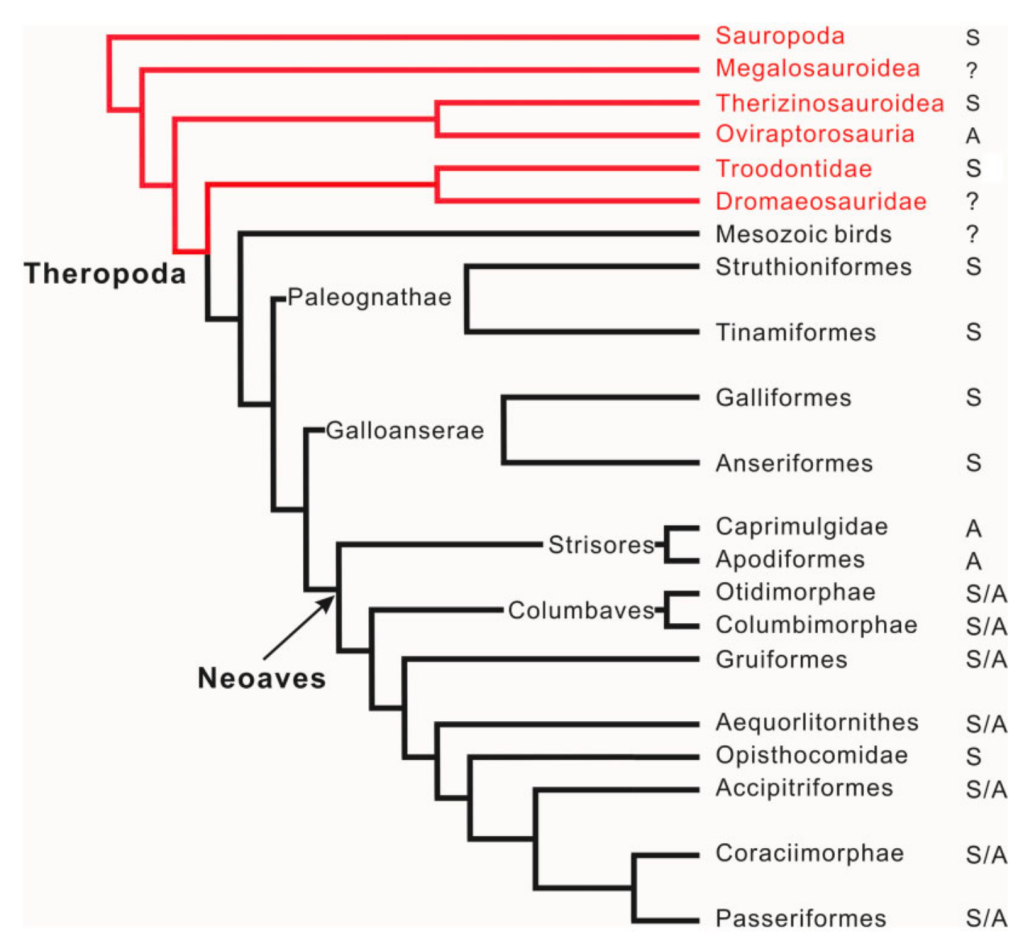Did egg-laying dinosaurs exhibit parental care? Did they lay eggs in a communal nest? Sit over the developing babies to guard the eggs or provide thermoregulation? There are many questions about dinosaur reproduction that we do not know. However, a new study by Yang and colleagues uses context clues from three fossil eggs pulled from the same nest to support the hypothesis of asynchronous egg hatching and communal nesting in oviraptorid dinosaurs.

Did oviraptorids exhibit hatching asynchrony?
Hatching synchrony occurs when all eggs in a nest hatch at the same time, such as when sea turtles hatch, emerge from their nests, and collectively race toward the ocean. Whereas hatching asynchrony occurs when eggs hatch at different times, a strategy used by some species of modern birds, such as owls and hummingbirds (Figure 2). Asynchrony can occur when eggs are laid at different times, or when resources or incubation temperatures are not uniform within a nest. Previous work suggested that only modern birds have asynchronous hatching. However, several lines of evidence from the current study suggest that oviraptorids also exhibited hatching asynchrony. First, looking at components of the fossilized shell, Yang and collogues found different embryo-induced erosion among eggs. This result suggests the eggs were at different developmental stages and would have hatched at different times. Next, the team used a novel method, neutron tomography, to explore the ossification and articulation of bones within each egg. Again, the results suggest one of the three eggs was laid after the other two. Finally, the team looked at the placement of the eggs within the nest. Yang et al., 2019 previously hypothesized that oviraptorids lay eggs in rings starting at the center, with younger eggs on the outer rings. In support of this hypothesis, the embryos at the center of the clutch studied here were at a later developmental stage than the egg on an outer ring.

Did oviraptorids bury their eggs like turtles or were they exposed to the air like many modern birds?
Surprisingly, oviraptorids did a little of both! In a recent study, Yang et al., 2019 suggested that oviraptosaurians laid eggs in rings, partially burying each ring before starting to lay the next. The specimen from the current study supports this hypothesis based on the position of the embryos within the eggs, the histology of the eggs themselves, and the shape of the eggs. The eggs from this study would have been partially buried leaving the larger portion of the egg exposed to the air.
Did oviraptorids use contact incubation?
The authors do not discount the possibility of having parents incubate the nests using contact incubation or sitting on the eggs. However, based on the ring structure and differences in age among rings, it seems more likely that oviraptorids hatching asynchrony was likely caused by different oviposition times.

Did oviraptorids nest communally?
While the egg on the outer edge of the nest was developmentally younger, the fetus inside was longer than the two fetal eggs that were further along in development. As egg size is limited by the size of the mom’s pelvis, it is possible that the younger egg was laid by a larger female. While this evidence is not conclusive, it does suggest that oviraptorids may have laid eggs in a communal nest.
Why is this study important?
These fossil eggs elucidate the asynchronous hatching of avian ancestors. While the exact species of this specimen cannot currently be determined, these fossil fetuses allow hatching asynchrony to be traced further back into the avian lineage to the oviraptorid dinosaurs. Additionally, results from this study suggest oviraptorid dinosaurs exhibited a unique nesting strategy that follows neither the modern bird nor modern crocodilian models. Instead oviraptorids likely nested communally but laid eggs at different times within the same partially buried nest.
Kelly Diamond is currently a postdoc at Seattle Children’s Research Institute studying how machine learning can be used in 3D image analysis. To find out more, check out her website https://DiamondKM.weebly.com/ or follow on twitter @DiamondKMG